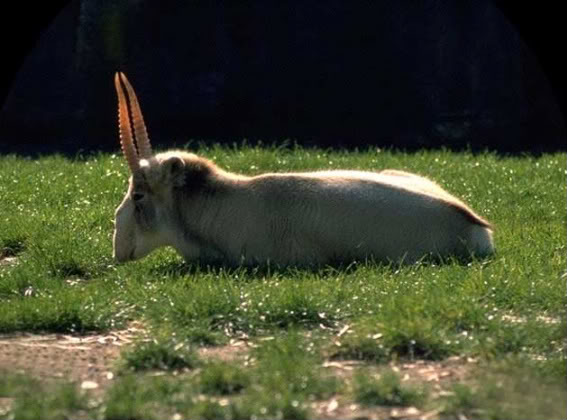The Ural population of the Critically Endangered saiga, a curious-looking Asian antelope, has been decimated by an unknown assailant. 12,000 saigas, mostly females and their calves, were found dead in western Kazakhstan reports the Saiga Conservation Alliance.
Researchers are currently investigating the cause of the deaths. However, they have linked the mass mortality to a naturally-occurring bacterium called pasteurellosis, which if triggered by infection, poison, stress, or malnutrition can lead to rapid death.
Once a million strong, the saiga suffered a precipitous collapse beginning in the 1990s: losing 95 percent of its population in 15 years. Most of the animals were killed by poachers seeking meat and profits from traditional Chinese medicine markets—which uses the saiga’s horns for medicine—after the Soviet Union collapsed and Central Asia’s rural economy with it.
The saiga is currently found in five populations, but the Kazakhstan is the only population lacking an internationally-supported conservation program. The Saiga Conservation Alliance is working with local authorities and the Association for the Conservation of Biodiversity in Kazakhstan to determine what caused the pasteurellosis.
The saiga is a survivor of the Ice Age. It roamed the Central Asian plains alongside mammoths and woolly rhinoceroses.

The saiga antelope.
Related articles
After declining 95% in 15 years, Saiga antelope begins to rebound with help from conservationists

(09/20/2009) In a decline on par with that suffered by the American bison in the Nineteenth Century, in the 1990s the saiga antelope of the Central Asian steppe plummeted from over one million individuals to 50,000, dropping a staggering 95 percent in a decade and a half. Since then new legislation and conservation measure have helped the species stabilize in some areas but in others the decline continues. Working for six years with the Saiga Conservation Alliance, Founding Member and Executive Secretary Elena Bykova has helped bring the species back from the very brink of extinction.
The end of migrations: wildlife’s greatest spectacle is critically endangered
(07/28/2008) If we could turn back the clock about 200 years, one could watch as millions of whales swam along their migration routes. Around 150 years ago, one could witness bison filling the vast America prairie or a billion passenger pigeons blotting out the sky for days. Only a few decades back and a million saiga antelope could be seen crossing the plains of Asia.
Population of bizarre Mongolian antelope plunges 95% in 15 years
(10/19/2006) A group of scientists led by the New York-based Wildlife conservation Society (WCS) working in Mongolia’s windswept Gobi Desert recently fitted high-tech GPS (Global Positioning System) collars on eight saiga antelope in an effort to help protect one of Asia’s most bizarre-looking — and endangered — large mammals.